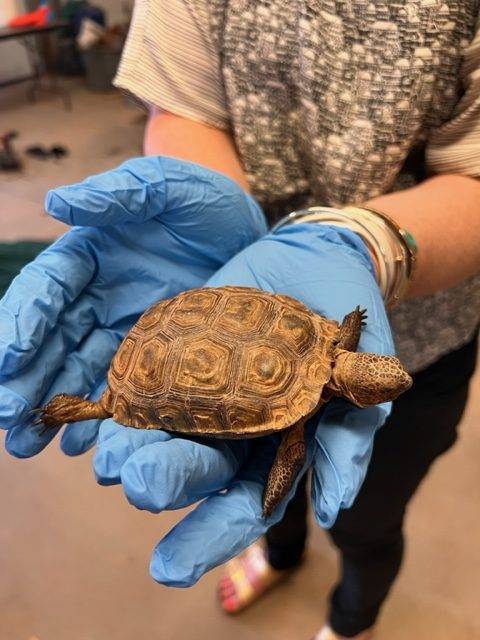DWR News Release
SALT LAKE CITY — A total of $5.5 million was allocated to dozens of wildlife-related projects at the recent annual Utah Division of Wildlife Resources Endangered Species Mitigation Fund meeting on April 23.
The Endangered Species Mitigation Fund was created in 1997 to direct funds toward species and projects that will proactively help to prevent Endangered Species Act listings in Utah. The Utah Wildlife Action Plan identifies species and habitats that are in need of conservation attention and further helps prioritize funding decisions.
“Proactive conservation helps keep Utah’s native species healthy,” DWR Assistant Habitat Section Chief Paul Thompson said. “Healthy populations don’t need protection under the Endangered Species Act, which in turn keeps management decisions at the state level and reduces additional federal oversight and economic restrictions that can come with Endangered Species Act listings.”
Roughly 60 projects will be funded by the Endangered Species Mitigation Fund over the next fiscal year (from July 1, 2024 to June 30, 2025). The $5.5 million is an increase from past years, due to an additional $2 million in funding that was approved by the Utah Legislature during the 2024 legislative session.
“Conservation funding for species that are not hunted or fished is hard to come by,” Thompson said. “Those of us in Utah working to better understand and maintain healthy populations for our lesser-known species are fortunate that our state legislature had the foresight to establish the Endangered Species Mitigation Fund to help preserve Utah’s biodiversity.”
The projects that will be funded each year are selected and approved by the Endangered Species Mitigation Fund Advisory Committee, a seven-person committee of diverse stakeholders and organization representatives.
This year, the funds will be allocated to the following:
- Programs and recovery efforts to help Utah species currently listed under the Endangered
- Species Act, including the Utah prairie dog, June sucker, Colorado pikeminnow, razorback sucker, bonytail, Virgin River chub, woundfin, Mojave desert tortoise and several plant species. Approximately 45% of the total funds will go toward these species’ recovery efforts.
- Conducting studies to better monitor Utah’s native species populations so they can be more effectively managed in order to prevent additional listings under the Endangered Species Act. Two projects will be jointly funded this year with the Office of the Great Salt Lake Commissioner to better understand species that use the Great Salt Lake. These two projects will complete comprehensive surveys for Wilson’s phalaropes, red-necked phalaropes and the snowy plover.
- Other projects to help biologists better understand other native species and improve their habitats, including projects focusing on Utah’s springsnails, Western toad (also known as the boreal toad), green sucker, bluehead sucker, roundtail chub, flannelmouth sucker, pygmy rabbits, Gunnison sage grouse, Gunnison’s prairie dog, pinyon jay, black-rosy finch and other native bats, plants and pollinator insects.
- Matching federal state wildlife grant funding, which will stretch funds even further to help with additional conservation projects that benefit Utah’s native species.
Since 1997, the Endangered Species Mitigation Fund has:
- Completed more than 650 projects that benefit native fish and wildlife species.
- Dedicated more than $85 million toward native species conservation efforts.
- Helped recover populations of various species to achieve two Endangered Species Act delistings and three downlistings (from endangered status to threatened), and to prevent more than 20 species from being listed under the Endangered Species Act.
These recently allocated funds and projects are in addition to the record $4.8 million in conservation permit funds that were allocated to wildlife research and habitat projects earlier this month. Both of those funding programs use Utah’s Watershed Restoration Initiative, a Utah Department of Natural Resources partnership-based program, which serves as a centralized portal for funding and tracking the completion of habitat-related projects.
Learn more about the Endangered Species Mitigation Fund on the DWR Wild podcast.

